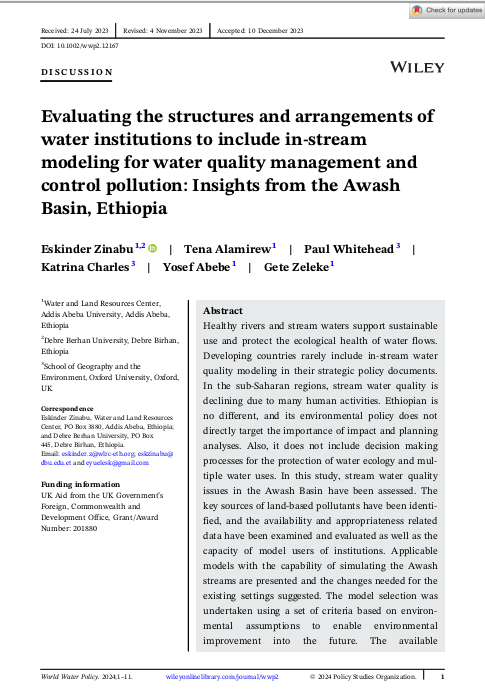Eskinder Zinabu, Tena Alamirew, Paul Whitehead, Katrina Charles, Yosef Abebe, and Gete Zeleke
Healthy rivers and stream waters support sustainable use and protect the ecological health of water flows. Developing countries rarely include in-stream water quality modeling in their strategic policy documents. In the sub-Saharan regions, stream water quality is declining due to many human activities. Ethiopia is no different, and its environmental policy does not directly target the importance of impact and planning analyses. Also, it does not include decision making processes for the protection of water ecology and multiple water uses. In this study, stream water quality issues in the Awash Basin have been assessed. The key sources of land-based pollutants have been identified, and the availability and appropriateness related data have been examined and evaluated as well as the capacity of model users of institutions. Applicable models with the capability of simulating the Awash streams are presented and the changes needed for the existing settings suggested. The model selection was undertaken using a set of criteria based on environmental assumptions to enable environmental improvement into the future hydrological and monitoring information provides an opportunity to apply model analyses, while the poor capacity of the governmental model users is of concern. With limited supporting conditions in governmental water institutions, the level of in-stream water quality modeling integration in the Awash Basin development plans is too low to make recommendations based on key areas of support. It is time to apply and capitalize on the potential opportunity of using the models in local, regional, and national institutions for planning and impact analyses and strategic policy documents. The methods described in this study can be a guidance for model practitioners of the Awash basin targeting improvement in their institutions.

